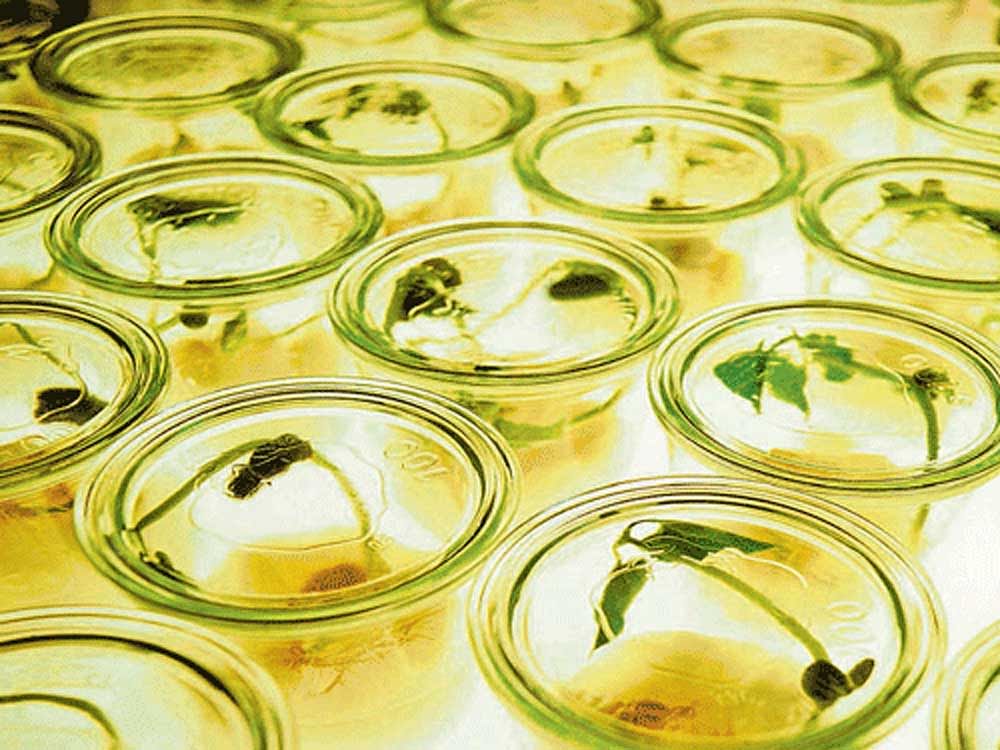At least 12 farmers have been booked in Maharashtra for planting banned genetically modified (GM) cotton and brinjal seeds. Undeterred by this, farmers have been protesting the blockade of new technologies that could aid farming. This movement has elicited mixed responses from farmer groups — some support the idea; others oppose the introduction of GM technologies in Indian agriculture.
The anti-GMO argument rests on three pillars: first, that GMOs are controlled by large companies and are essentially anti-farmer; second, they are harmful to biological diversity and third, they are harmful to human health. They also argue that the Maharashtra farmers have been paid by the large companies to pressure the government into accepting the technology.
On the other hand, pro-GMO groups such as the Shetkari Sanghtana backing the Maharashtra protest argue that farmers need to adopt more GMOs to get better yields and more income. This is by no means a new argument. In 2001, farmers were accused of illegally planting GM cotton, much prior to India permitting the commercialisation of Monsanto’s Bt cotton. So, as these two groups tussle it out, who will blink first?
Well, no matter who blinks, in the current policy environment the loser is going to be the Indian consumer. Why? Because in the not-so-far future, the world is going to become more dependent on GM crops.
Conventional plant breeding is too slow to cope with changes in the environment including famines, evolving pests and increasing food demand. Further, GM is a more precise technology to arrive at the desired trait whereas plant breeding can introduce many other changes in the plant. GM can also be used to introduce traits which could never be achieved through traditional plant breeding.
For example, Bt cotton – the only GMO allowed in India – was introduced by Monsanto to curb losses of cotton to the pink bollworm. Bt or Bacillus thuringensis is a naturally occurring bacterium that releases toxins to kill insect larvae.
The bacterium encodes different toxins; each toxin selectively targets certain insects. The gene incorporated in Bt cotton, for example, is supposed to selectively work against bollworm and not harm other insects found in nature. The toxins were discovered in 1901 and have been in use in agriculture since the 1920s. In fact, Bt toxins have also been approved for use in organic farming. Thus, the whole concept of using Bt toxin as a form of pesticide is not novel or unique to the GMO industry. However, the incorporation of the toxin into the cotton plant could only be achieved through gene modification technologies.
Having said this, GMOs do come with their risks (as any technology and human intervention does). Multiple studies have shown GMOs to be safe for human consumption. But their impact on the environment and biological diversity is more debatable.
A peer reviewed paper (Latham et al, 2017) found that the Bt toxin in GMOs is different in structure and function from the naturally found toxin. The GMO toxin was capable of affecting many more species than the natural toxin, thus negating its claim of being selective over other pesticides.
These questions of the safety and specificity of the toxin are, however, scientific questions which can be easily controlled through regulatory standards. On the broader question of protecting biodiversity, agriculture itself is probably the biggest threat to biodiversity and thus, limiting this argument as an issue with GMOs is fraudulent logic.
This is also true of pests eventually gaining resistance to the GMO — it is natural that as plants evolve, pests who feed on them will also evolve. The answer to this pest evolution is the inclusion of technologies which can rapidly help the plants to also evolve.
Farmers’ choice
The final question that remains is of whether farmers should use GM crops or not? In this regard, the government should enable access to safe technology and leave the option of buying or using GM crops to farmers, in much the same way as it has left the option of consuming GMO foods to end-buyers. Farmers are intelligent and know what is best for their farms and incomes. Why should other groups take away that choice from them?
Technologies for creating GMOs and now genetically-edited organisms are far from perfect; but they have the potential to create powerful tools that can both protect and nurture biological diversity on earth.
To discourage their development is folly, but to unquestioningly embrace them could also lead to disastrous consequences. The more balanced approach would be to recognise both the risks and benefits in a case-by-case manner.
No two GMOs are the same and transparency in safety and efficacy tests would be helpful in distinguishing between harmful and good GMO crops. Finally, India needs better regulation that is scientifically driven to ensure we do not end up becoming dependent on other countries for both our seeds and our food.
(The writer is Research Fellow, Takshashila Institution)
